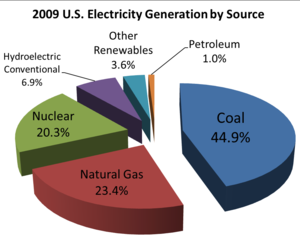Market prices don’t reflect hundreds of billions of dollars in hidden costs of energy production to human health and the environment
Market prices don’t reflect hundreds of billions of dollars in hidden costs of energy production to human health and the environment, a National Research Council panel said in a report released today.
“There are many external effects of energy production and use,” said Jared Cohon, president of Carnegie Mellon University and chairman of the panel that wrote the report. “These are important because they can lead to distortions in decision making.”
The report estimates $120 billion in hidden damages not related to climate change in the United States in 2005, the primary year used in the study, which was requested by Congress. The tally mainly reflects hidden costs of health problems from air pollution in electricity generation and transportation. The amount does not include damages from climate change, ecosystem destruction or risks to national security.
While the report does not estimate specific costs related to damages resulting from climate change, it notes that climate-related damages done by each ton of carbon dioxide emissions will be worse in 2030 than now. Even if total emissions remain steady with the present, the report says, the damages caused by each ton would increase 50 percent to 80 percent.
Electricity generation accounted for $63 billion, or more than half the quantified damages in 2005, Cohon said in a teleconference.
Coal-fired power plants accounted for $62 billion of that amount, the report says. Non-climate damages, primarily caused from sulfur dioxide, nitrogen oxide and particulate matter emissions created by burning coal, average about 3.2 cents per kilowatt-hour of energy produced. The report says damages will fall to 1.7 cents per kilowatt-hour by 2030.
Electricity produced from natural gas produced $740 million in aggregate damages in 2005, primarily associated with air pollution.
Nuclear and renewable electricity generation such as wind and solar produced fewer hidden costs than fossil fuels, the report says. But issues related to nuclear waste storage and uranium mining could result in additional costs and warrant further study, it says.
Heat energy, primarily produced by natural gas, resulted in about $1 billion of the total $120 billion in estimated costs, the report says.
Motor vehicles produced $56 billion in health and other non-climate damages, the report says. The cost estimate includes damages for both light- and heavy-duty vehicles and a variety of fuels, and it covers their full life cycles from extraction and transportation of the fuel to manufacture and operation of the vehicle. The report found relatively small differences in terms of damages related to different fuel types and technologies.
“In vehicle operation … what comes out of the tailpipe accounted for less than one-third of damages from transportation,” Cohon said. “Vehicle manufacturing made up a significant portion of the other damages.”
Corn-based ethanol resulted in similar or slightly higher non-climate damages than gasoline, the report says, because of the energy needed to produce the corn and convert it into fuel. Cellulosic ethanol, however, had lower damages.










